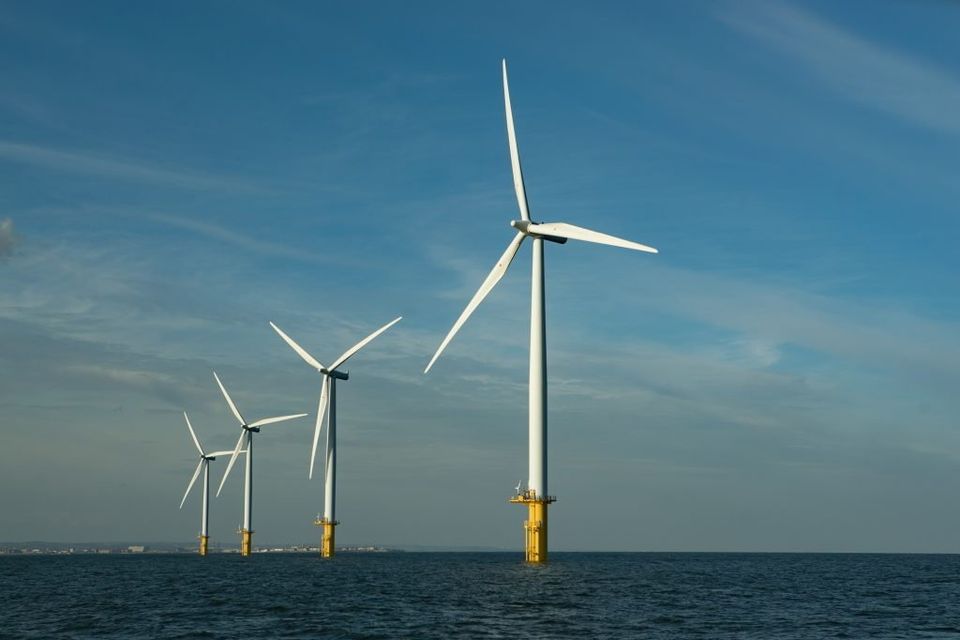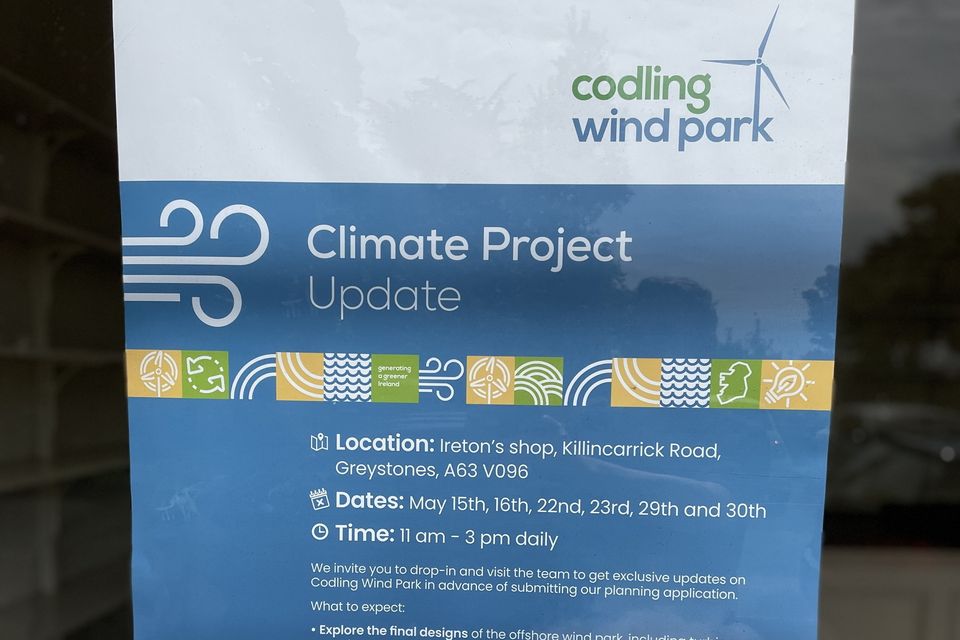Codling Wind Park to share plans with Wicklow residents before planning submitted



Codling Wind Park, which recently announced a 25pc reduction in the number of turbines required for the project off the coasts of Greystones and Wicklow town, is holding public information meetings in Greystones on all the remaining Wednesdays and Thursdays this month.
In advance of submitting a planning application, a team from the project will be on hand at Ireton’s store, Killincarrick Road, Greystones, from 11am to 3pm daily on Wednesdays and Thursdays, starting from May 15.
The open information sessions will give members of the public a chance to explore the final designs of the offshore wind park, including turbine numbers and layout, learn about the Community Benefit Fund, and get a visual sense of the project using virtual reality headsets and video materials.
The project, which will be located approximately 13 to 22 kilometres off the County Wicklow coast between Greystones and Wicklow town is a 50/50 joint venture between Fred Olsen Seawind and EDF Renewables.
Project Director Scott Sutherland said he was looking forward to sharing details of the final design with members of the local communities and other stakeholders, ahead of submitting the planning application for the project.
“This is one of the largest energy infrastructure investments ever seen in Ireland and a tremendously exciting one to work on,” he said. “As well as supplying over a quarter of Ireland’s 2030 offshore wind target, Codling Wind Park will support Irish energy independence, help stabilise the cost of electricity for Irish consumers and will displace 1.7 million tonnes of carbon. It will also help the country realise its enormous potential to become a world leader in offshore wind.
Read more
“Through various rounds of public consultation, we have listened to the people of Wicklow, Ringsend and Poolbeg and incorporated their feedback into the design where possible. The reduction and layout of the reduced number of turbines was always key in that regard,” he continued.
“The design of the project has been informed by a range of inputs including geophysical, aerial and vessel-based surveys – some going back over 15 years – which have all fed into an extremely detailed Environmental Impact Assessment (EIA) report which forms a critical part of the planning application. Our aim at all times has been to protect the environment and mitigate any potential impacts as well as proactively enhancing it where possible.”
As well as details of the turbine numbers and layout, Community Benefit Fund (CBF) of up to €200m will be established as part of the project to fund local community-based projects.
The aim of the fund, which will be administered by an independent Fund Administrator, as part of the Offshore Renewable Energy Support Scheme (ORESS), is to deliver economic, environmental, social, and cultural benefits to local community groups over a 20-year period.
Mr Sutherland said that the €10m per year fund, one of the biggest anywhere in the world, would not become available until after the project had received planning and begun construction, he urged community groups to consider what projects or initiatives they would like to benefit from the fund.
“The Community Benefit Fund for this project will create lasting legacies for local communities near the project over the next 20 years. While the fund will not become operational until the construction phase of the project, we believe it’s very important for clubs, groups, and voluntary organisations to start their own preparation and planning, so they are fund-ready when the time comes.
“The key thing to remember is that while Codling will provide the funding, the community will decide how it is spent. We want the community to start thinking now about what they will do with the funds,” he said.
When developed, Codling Wind Park will be Ireland’s largest offshore wind farm. The project is expected to create over 1,000 jobs in the construction phase and 75 new, long-term jobs associated with its proposed operations and maintenance base.
Subject to it receiving planning permission and all other necessary permits and consents being received, Codling Wind Park could begin construction in 2026-27. Construction is expected to take two to three years to complete.




